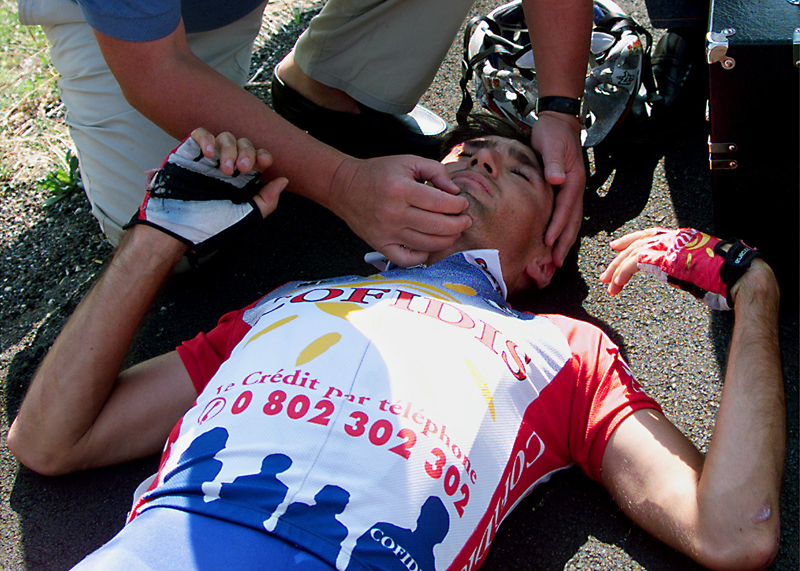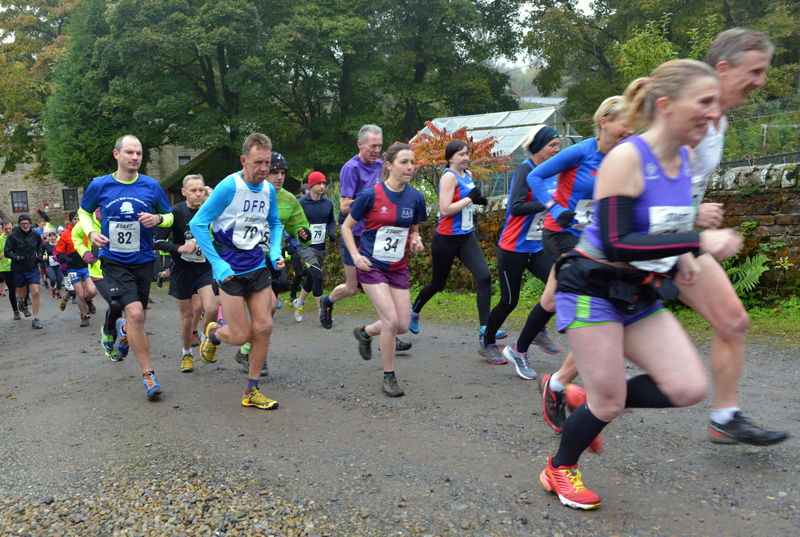You are viewing 1 of your 1 free articles. For unlimited access take a risk-free trial
Cycling training: bone density in pro cyclists makes for uncomfortable reading

The height of the cycling season is upon us and with it the big tours such as the Tour de France and the Giro d’Italia. During these events, the professional cyclists typically churn out hundreds of kilometres per week under race conditions. Meanwhile, even lesser mortal such as club and sportive riders will be upping their mileages, spurred on by forthcoming races and events.
Assuming that cyclists undertake a properly structured training programme with manageable increases in training volumes and intensity, and that they allow adequate time for recovery with good nutrition, the physiological and health effects of increased cycling performance will almost always be beneficial. For example, research shows that increasing the intensity of aerobic type exercise such as cycling confers several health benefits such as:
- Enhanced insulin sensitivity(1);
- Reduced blood pressure(2,3);
- Improved blood cholesterol profile(2,3);
- Reduced body fat(4);
- Reduced risk of coronary heart disease (as the result of the above)(5,6);
- Better quality of life in older age(7);
Panel 1: Importance of bone density
Why are high levels of BMD important? In very simple terms, this is because low levels of BMD are associated with an increased risk of osteoporosis. Osteoporosis is a disease that affects mainly (but not exclusively) older people, in which bones gradually become more fragile and likely to break. These broken bones are also known as fractures and typically occur typically in the hip, spine and wrist.Osteoporosis (which quite literally means ‘porous bones’) is often known as the ‘silent crippler’ because it often progresses painlessly and unnoticed, until a bone actually breaks. Although any bone can be affected, fractures of the hip and spine are particularly problematical because they can produce a number of long-term complications including loss of ability to walk and permanent disability, loss of height and severe back pain. Although the precise mechanisms are poorly understood, the hallmark of osteoporosis is a reduction in skeletal mass caused by an imbalance between bone breakdown (resorption) and bone formation. This results in reduced bone mineral density.
Although osteoporosis is poorly understood as a disease process, we do know that being physically inactive is a major risk factor for developing osteoporosis. This is because vigorous ‘bone-loading’ physical activity is very effective at stimulating the uptake of calcium into bones, thereby helping to build bone mass in earlier years, and reducing the loss of bone mass in later years(8).
Bone loading exercise
Research has shown that the higher the muscular and impact load (gravitational) forces, the higher the BMD produced; so for example, gymnasts whose sport requires high loadings and impacts tend to have higher BMDs than endurance runners(9). By contrast, those who participate in sports with plenty of muscular motion, but without substantial loading (eg swimming) do not achieve the high BMDs of sports with higher loading(10). There’s also evidence that activities which develop strength (such as weight training) are particularly effective at producing high BMDs in the hip and spine(11,12).So how does cycling fit into the equation? Well, muscular loading during cycling can be very high, especially during sprinting – for example on the track. On the other hand, the smooth spinning nature of the pedalling action and the fact that cyclists are supported by their saddle means there’s virtually no bone loading associated with gravitational impact (unlike the shock of foot-strike during running or field sports). In distance road cycling, therefore, where sprinting is only a minimal component, the degree of total bone loading is likely to be quite low, which has prompted researchers to look at the issue of BMD in cyclists more generally.
Overall, the balance of research suggests that road cyclists do not benefit from increased BMD in the same way that other sportsmen and women do (see below). But, more worryingly, some studies indicate that road cycling could actually have a detrimental effect on BMD. For example, French scientists found recently that compared to healthy non-cycling males, road cyclists had lower levels of BMD, and this was despite the fact that they were consuming significantly more dietary calcium (considered essential for bone health) than their sedentary counterparts(13). The researchers speculated that the combination of high training volumes of these cyclists combined with lack of bone loading might be a factor and now a brand new study on pro cyclists appears to bear this out (14).
Panel 2: Road and mountain biking
Unlike road cycling, bone loading from shock absorbing impact is a factor in mountain biking. So do mountain bikers have higher BMD levels than roadies? A US study compared the BMDs of 16 mountain bikers, 14 road bikers and 15 active non-cyclists (controls), where they looked at the femur, lumbar spine, and total body bone mass using a technique called DXA(15). The cyclists were training for an average 11 hours per week and had been cycling for around eight years.The results showed that (when adjusted for body weight and controlled for age), BMD was significantly higher at all sites in the mountain cyclists compared with the road cyclists and controls. The researchers concluded that ‘endurance road cycling does not appear to be any more beneficial to bone health than recreational activity in apparently healthy men of normal bone mass’.
Meanwhile, another DXA study by Brazilian scientists found that while well trained young cyclists were aerobically fitter and had more muscle mass, their bone BMDs were no higher than sedentary controls of the same age(16). Other studies have also found that the BMD of road cyclists is no higher than in sedentary adults of the same age (17-19), which is obviously less than desirable from a bone health perspective.
Pro cyclists
In the study, scientists in Sweden, France and the UK compared the BMD at several skeletal sites of 30 male professional cyclists with 30 similarly aged males (controls), using DXA. The cyclists were all racing in professional teams at the time of the study, and had participated in at least one of the main 3-week stage races (Giro d’Italia, Tour de France or Vuelta a España) in each of the previous three years. The controls were all healthy but had cycled less than one hour per week and had not performed weight-bearing exercises (ie running or resistance training) for more than one hour per week for three years prior to the time of the study.The results showed that overall, the pro cyclists had significantly lower levels (9.1% less) of BMD than the control group; more worrying was that in the lumbar vertebra of the lower back and femoral neck (ball joint at the top of femur), BMDs were 16% and 18% lower respectively. The researchers commented that although their study examined pro cyclists training and racing for upwards of 22-25 hours a week, the findings could have implications for road cyclists more generally. Of particular concern is that cyclists are at risk of traumatic injuries from falls or collisions, something that can easily lead to fracture.
Conclusion and recommendations
So where does this leave cyclists who are concerned about longer-term bone health? Well, it’s important to emphasise that reduced BMDs in road cyclists seems to be associated with large volumes of training (over 20 hours per week). The majority of recreational and club riders will not fall into this category. However, even recreational cyclists are unlikely to be benefiting from the increased BMD associated with many other forms of exercise and which can help prevent osteoporosis later in life.The good news according to Frederic Campion, one of the researchers involved in the study above(19), is that resistance training and running are both excellent bone mass builders; adding small amounts of these activities into your weekly programme is not just an excellent bone health insurance policy, recent research suggests that they could even help improve your cycling – but that’s another story!
Andrew Hamilton BSc Hons, MRSC, ACSM is a member of the Royal Society of Chemistry, the American College of Sports Medicine and a consultant to the fitness industry, specialising in sport and performance nutrition
References
1. Diabetes Care. 1996;19:341-92. Med Sci Sports Exerc. 2004;36:533-53
3. Med Sci Sports Exerc. 2001;33:S438-45
4. J Clin Densitom. 2010 Jan-Mar;13(1):43-50
5. GAm J Cardiol. 2000;86:53-8
6. N Engl J Med. 2002;346:793-801
7. Arch Intern Med. 2002;162:2285-94.
8. Med Sci Sports Exerc. 2001 33: S551-S586
9. J Bone Mineral Res. 1995 10:26-35
10. J Bone Miner Res. 1995 10:586-593
11. Med Sci Sports Exerc. 1993; 25:1103-1109
12. Med Sci Sports Exerc. 1990; 22:558-563
13. J Sports Med Phys Fitness 2009 ; 49 : 44 – 53
14. Int J Sports Med. 2010 Apr 29. [Epub ahead of print]
15. Bone. 2002 Jan;30(1):281-6
16. J Clin Densitom. 2010 Jan-Mar;13(1):43-50
17. Int J Tissue React 1996; 18 : 121 – 124
18. Sports Sci 2004 ; 22 : 645 – 650
19. Med Sci Sports Exerc 1997 ; 29 : S5
Newsletter Sign Up
Testimonials
Dr. Alexandra Fandetti-Robin, Back & Body Chiropractic
Elspeth Cowell MSCh DpodM SRCh HCPC reg
William Hunter, Nuffield Health
Newsletter Sign Up
Coaches Testimonials
Dr. Alexandra Fandetti-Robin, Back & Body Chiropractic
Elspeth Cowell MSCh DpodM SRCh HCPC reg
William Hunter, Nuffield Health
Keep up with latest sports science research and apply it to maximize performance
Today you have the chance to join a group of athletes, and sports coaches/trainers who all have something special in common...
They use the latest research to improve performance for themselves and their clients - both athletes and sports teams - with help from global specialists in the fields of sports science, sports medicine and sports psychology.
They do this by reading Sports Performance Bulletin, an easy-to-digest but serious-minded journal dedicated to high performance sports. SPB offers a wealth of information and insight into the latest research, in an easily-accessible and understood format, along with a wealth of practical recommendations.
*includes 3 coaching manuals
Get Inspired
All the latest techniques and approaches
Sports Performance Bulletin helps dedicated endurance athletes improve their performance. Sense-checking the latest sports science research, and sourcing evidence and case studies to support findings, Sports Performance Bulletin turns proven insights into easily digestible practical advice. Supporting athletes, coaches and professionals who wish to ensure their guidance and programmes are kept right up to date and based on credible science.









